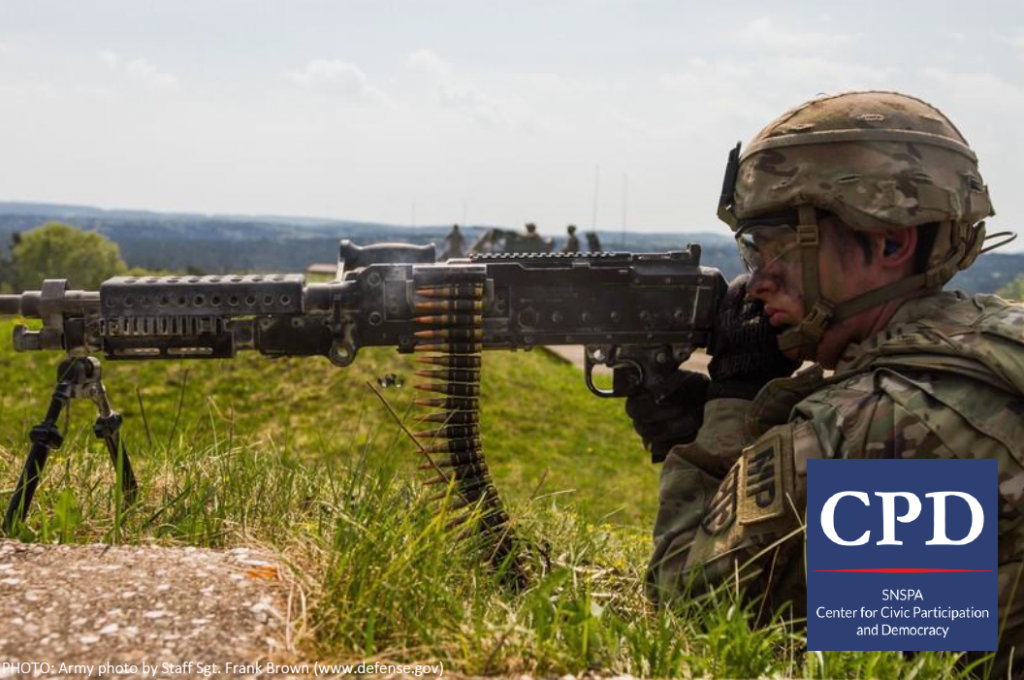EXECUTIVE SUMMARY
- The Saber Strike military exercise in Poland and the Baltic Sea took place on 3 – 15 June 2018, shortly after the Sea Shield military exercise in the Black Sea. In this paper, for the first time, we made a comparative analysis on how Saber Strike was visible in social media throughout the world, not only in Romania. We also tried to look at how the two recent military exercises were reflected in the Romanian media and social networks, comparatively. Our theory is that the conclusions from our previous studies in Romania regarding the visibility of NATO military exercises can be applied to the entire region along the Eastern border of NATO.
- NATO is conducting its exercises with too much discretion, with low impact on social media and limited impact on media agendas across the countries at the Eastern border of NATO. This is happening at the same time as an increased activity of anti-Western propaganda in the region. Topics that are promoting disruptions in the transatlantic relations, in the trust among the EU or the NATO countries are much more visible, in the context.
- Was this exercise a success in Europe? Was this event visible? What are the lessons we can learn from studying the online impact of this event? Our online analysis shows that content-wise the exercise was a success (because most of the promoted were quite positive), but with a very limited cross-platform impact.
- Like other military exercises in the recent past, this one was also a very discreet one – NATO is not using these opportunities very well, and the promotion of military cooperation is visible only at a very limited level.
- The most active country in promoting this event was Poland. We’ve also noticed an increased interest in promoting news about the event from sources in China and Russia (official channels). In Eastern Europe, Romania was also a country with a high interest in the event.
- In Romanian online media, making a comparison between Saber Strike (the event in the Baltics and Poland) and Sea Shield (a naval exercise in the Black Sea, from May 2018), we can see that the bigger event (from Baltics and Poland) also benefitted from better visibility.
- A deeper analysis of online media shows that interest for Saber Strike was only registered at the beginning of the military exercise. This interest manifested in the mainstream online media, only with official messages. Regarding social media engagement, the most active moments were recorded toward the end of the exercise, when the notoriety of the event was higher.
- The only notable attack in the Romanian online media during Saber Strike came from the Sputnik area.
- There is also a conclusion regarding Moldovan media – the event had a very limited impact in Moldova as well; at the same time, the exercise was visible both through Western media (via Romanian online sources) and Russian media (with stories about the negative effects of the exercise).
- Our study concludes that NATO needs to be more proactive. There is a strong need for positive stories about the Western model, to counter the effects of negative stories disseminated by Russian propaganda, and these moments of military cooperation can offer such content. In countries like Poland, Romania or the Czech Republic, the road to becoming democratic societies was long, hard and it is still not finished. This is a struggle that never stops. Because of that, we not only need the promotion of the Western values and model, but also the reinforcement of this model, with different types of positive stories (including military ones). We also believe that existing projects, such as the #WEARENATO campaign, should be better tailored to address local audiences more efficiently, with bigger flexibility allowed in the communication approach in order to deliver messages that various segments of the local population can understand and relate to.
For more information, click here
